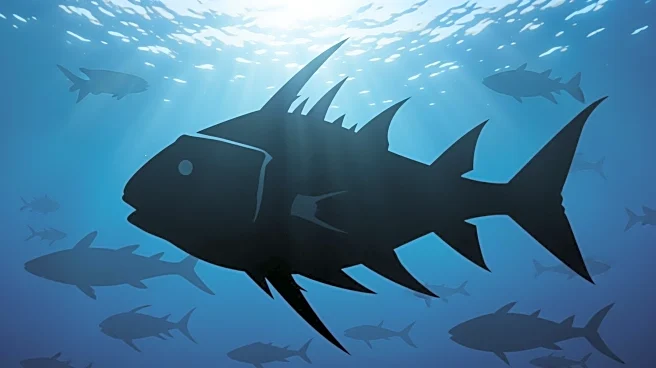What's Happening?
Researchers have successfully recovered intact RNA molecules from a woolly mammoth that died nearly 40,000 years ago in Siberia, marking the oldest RNA ever sequenced from an extinct vertebrate. This discovery,
made from a specimen nicknamed Yuka, challenges previous assumptions about RNA's stability and opens new possibilities for understanding extinct species' genetic traits. The RNA was extracted from muscle tissue, providing insights into the mammoth's genetic activity in its final hours. The analysis revealed genes involved in muscle contraction and metabolic stress, suggesting the mammoth experienced physical distress before death, possibly from a cave lion attack. Additionally, the study corrected a misidentification of Yuka's gender and uncovered unique microRNA molecules potentially specific to mammoths.
Why It's Important?
This breakthrough in ancient RNA recovery could significantly impact de-extinction efforts and synthetic biology projects aimed at reviving extinct species or engineering traits into modern animals. Understanding the genetic traits of Ice Age megafauna could inform ecological restoration initiatives, such as those pursued by companies like Colossal Biosciences. The ability to analyze ancient RNA also offers potential insights into the evolution of RNA viruses, which could have implications for understanding zoonotic diseases. As climate change accelerates the thawing of permafrost, more well-preserved specimens may be discovered, providing further opportunities for genetic research and conservation efforts.
Beyond the Headlines
The discovery of ancient RNA challenges existing notions of genetic decay and preservation, suggesting that RNA can endure under specific conditions for tens of thousands of years. This finding shifts scientific perspectives on the biochemical signature of death and opens new territory in forensic paleogenomics. The ability to read gene activity from extinct creatures offers a unique window into their biology and behavior, potentially transforming our understanding of ancient ecosystems and their inhabitants. As researchers continue to explore these possibilities, ethical considerations regarding de-extinction and its impact on modern ecosystems will become increasingly relevant.











